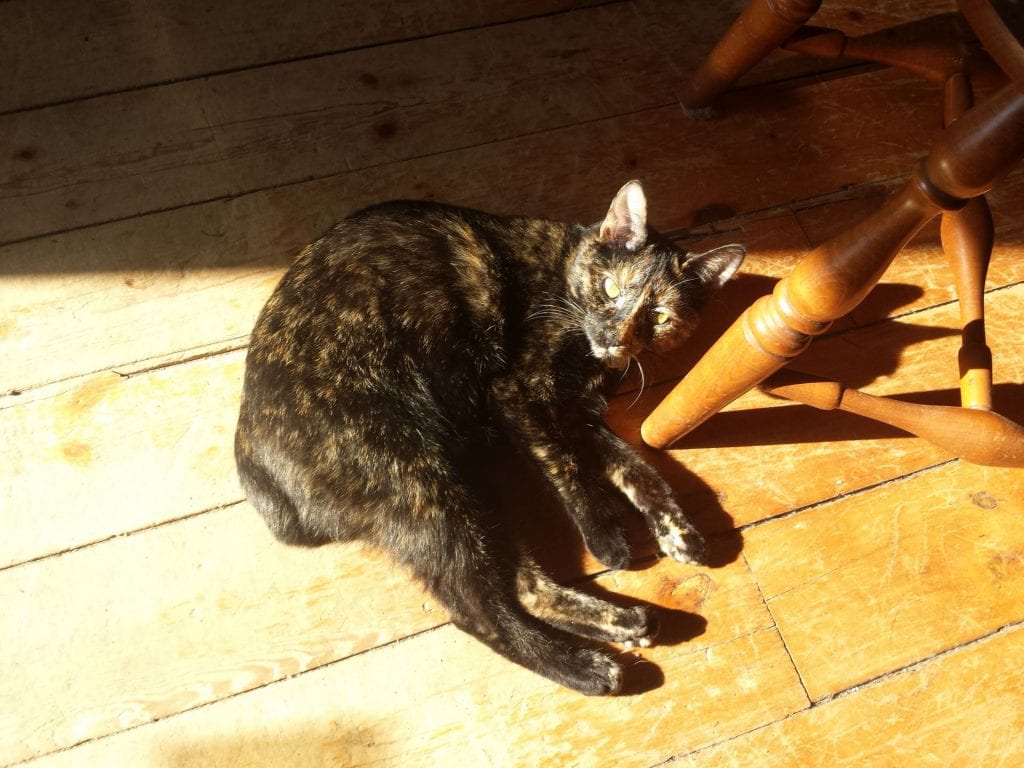We are in that beautiful time between Canadian Thanksgiving and Halloween, where many of our human family members are treating themselves to a multitude of tasty snacks! With all this snacking and indulgence, we of course want to include our pets in the family fun. It’s important to note that treats can be tricky, as there are many ways treats can be a bane rather than a boon to our pets!

Toxic
Watch for artificial sweeteners in products, especially those labeled as “low-glycemic”, “sugar-free”, “keto” and/or “diabetic”. Ingestion of artificial sweeteners, such as stevia and sorbitol, by our furry friends may result in gastrointestinal upset. One in particular should be avoided at all costs is xylitol. Even a very small amount consumed by a large dog can be fatal! We would strongly recommend that human families avoid bringing xylitol products into their homes to avoid accidental ingestion.
Chocolate
With all those delicious trick or treat snacks coming home, keep them safe from your pets. Chocolate is toxic to dogs and cats and should never be fed to a pet.
Beware of edibles
If part of your fall celebrations includes consuming edible marijuana products, ensure that these products are inaccessible to pets. Watch for sugar-free products as they may contain xylitol as well. The high doses of THC in these products are also toxic to pets. They were made to look, smell and taste great, and no packaging is a match for those nosey snouts!
For additional toxic foods, visit the ASPCA poison control website.
No bones about it!
Do not feed bones to your dogs and cats! Raw bones can harbour pathogenic bacteria such as e-coli, salmonella and campylobacter. Cooked bones are brittle and have a tendency to splinter and break into sharp shards, which can puncture or otherwise damage the lining of the intestinal tract. If large fragments of bones are consumed, they can result in intestinal obstructions and may require surgical removal. Many like to feed raw bones to maintain a pet’s oral health routine, however raw bones can cause more harm than good. Something has to give from the incredible strength of our pets’ jaws, and if not the boney treat, the tooth itself may break or chip. A severely broken or cracked tooth will be painful and at risk for infection. Unfortunately the pet will require a complete anaesthesia and dental surgery to extract the broken tooth.
Fat is flavour
We all know how much an otherwise bland dish can be enhanced by some flavourful gravy or imported olive oil, but keep them on the table please! High-fat snacks can cause severe gastrointestinal upset for our furry friends, such as gastroenteritis and even life-threatening pancreatitis.

Treat them right!
Treats and people food are not complete and balanced additions to your pet’s food. Your pet’s food has been specially formulated to provide them with all of the vitamins, minerals, amino acids and other nutrients that your pet needs, in optimal amounts and ratios. There is only a small window of flexibility beyond this for safe treating. Outside of this, we may be putting our pets at risk of malnutrition. Whether the diet you feed your pets is a commercial kibble or canned, therapeutic or homemade, too many treats can have serious consequences for your pet. If your pet is on a therapeutic diet or has specific medical conditions, some treats and people food may be detrimental to your pet or impact their treatment. Check with your veterinary healthcare team before feeding.
The Golden Ticket
Treats should make up no more than 10% of your pet’s daily caloric intake.
How much is that?
You can ask your veterinary healthcare team for your pet’s daily caloric budget as part of their nutrition assessment and recommendation, and to let you know how much their daily treat budget is.
How to determine treat amounts:
The Association for Pet Obesity Prevention has a great chart which can give you a rough idea what your pet’s caloric needs are.
Did you know?
Feeding recommendations are based on the assumption that you are not feeding your pet any other treats, people food, or top-dressing! When providing treats, you must ensure you are not overfeeding by removing the appropriate amount of food. That does NOT mean that you can provide a large treat and remove more food! Remember, treats and people food do not have all of the complete and balanced nutrition that their food has! Thus, even if we ensure that your pet is eating the correct number of calories, too many treats puts your pet at risk for malnutrition.
Steps to better treating:
Step 1: Determine their caloric need
Step 2: Determine their treat budget
Step 3: Determine the number of treats they can eat.
Step 4: Reduce their food accordingly
For example, using the link above:
- I have a 10 lb (4.5 kg) cat, Saga.
- He can eat 180kcal/day. 180 x 0.1 (10% of 180) is 18 kcal, therefore my cat can eat 18 Calories daily of treats
- This leaves him with 162 Calories daily from his food (180-18).
- Whiskas Temptations are 2 Calories each, so 18/2 (Treat budget/kcal per treat), he can have 9 treats daily.
- I have a 70lb (32 kg) German Shepherd, who eats 900 Calories daily.
- 900 x 0.1 (10% of 900) is 90kcal, therefore she can eat 90 Calories daily as treats
- She can eat 810 Calories of her food.
- Milkbones are 30 Calories each for medium Milkbones, so she can have 3 daily.
- Large Milkbones are 125 Calories each, so she cannot have a large Milkbone as her budget is only 90 Calories.

What’s the big deal?
If Saga eats an extra 10 treats daily for one year, that will result in approximately a 2lb (0.9 kg) weight gain, causing him to now be 20% overweight. This is like me gaining an extra 30 lb (13.6kg)!
Let’s say Kinetic eats 2 large milkbones per day. This will result in a 16.7 lb weight gain (7.6 kg), causing her to become 17% overweight. This is like me gaining an extra 24 lb (11 kg)!
October is Pet Obesity Awareness month. Make sure you are treating your pet right, by giving the right kind of treats and the right number of treats. This will help you build the special bond you have with your pet for a longer, happier life.
Written by: Shoshana Verton-Shaw, RVT, VTS (Nutrition)
Edited by: Dr. Sarah Dodd, Alex Rankovic


